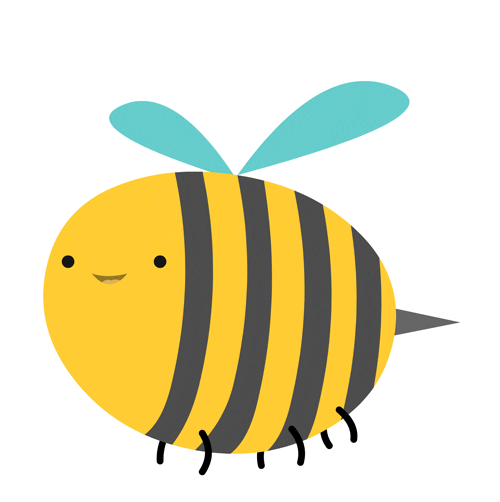Before we get all hot and heavy with the 3 elements you really ought to have on your business’s website, let’s back up to a Rule that gets baked into marketing strategy today:
Business Rule #108472, section B, paragraph 4: Your business needs a website in order to succeed.
Yet one more Rule you can ignore on your way to the bank. I’ve met dozens of entrepreneurs and creatives who created successful empires “despite not having a website.”
Or, in some cases, there is a website out there in the wild representing what the company was when little Johnny neighbor boy was learning how to do that “web stuff” in junior high. But if prospective customers had seen it they would’ve quickly put their wallets away for lack of trust.
It’s obviously in Peaceful Media’s best interest if you believe that Rule, but we do things a little differently around here. If it’s not in your best interest to invest in X, Y, or Z, and we don’t see how you get return on investment, then we’re going to proactively and compassionately recommend that you do *not* spend the money. I think the ol’ school used to call that “being a good neighbor”?
All that said, having a smart website with the 3 elements we’re going to discuss below will help you succeed. Particularly in the long term.
Reverend Michael Beckwith said: “You’re either pushed by pain or pulled by a vision.” But I think most people feel both forces in play.
And about that “long term” topic…
We work predominantly with new entrepreneurs who are “feeling” their way into this lifestyle. Key word: feeling. Because for many this is an emotionally driven decision. In the words of the late Joseph Campbell, they are “following their bliss.”
Or, put another way: escaping their hell. 🙂
I think it was Reverend Michael Beckwith who said: “You’re either pushed by pain or pulled by a vision.” But I think most people feel both forces in play. They feel gross going to work for a company they don’t believe in anymore AND they desire the freedom to stop work at 3pm so they can participate in their kid’s afterschool painting class.
So both of those feelings are in play and, depending on your personality type, the rational part of the brain is saying something to the effect of: “I don’t give a shit if it’s pain or vision driving you to quit that day job. That day job is putting money in your checking account, chief, so until you can show me the money with this ‘lifestyle business’ you’ve been trying to jam into my frontal lobe, you can take that afterschool paintbrush and shove it.”
But I digress…
The point is, rare is the entrepreneurial newb who is thinking long term strategy. Most just want to find the quickest way to replace $X/month salary so they can pursue passions.
And keep the lights on at home.
And pay those damn health insurance premiums.
And cap out the Roth.
And Susie’s afterschool painting class.
Damnit. (Wanders aimlessly back to 9er 5er with paintbrush protruding from odd place.)
And hey, if this is you, trust me when I say: I get it. My first 6 website design projects represented 6 mortgage payments and maybe a few 2-week old rotisserie chickens from the grocery outlet. I guarantee you I was not thinking long term strategy at that time; I was thinking “what the f— will happen to me if I foreclose on this house?” And that was when I was single. Add on two more mouths to feed to the pressure bomb ticking away? It’s intense!
In that intensity of swirling, sometimes competing demands (your heart vs your mind) we rarely make perfect long term business decisions. I originally named my business “Jason Miller Media.” lol, that’s just gross. Great branding, dude! Then a moment of true, forward-thinking, grounded inspiration hit me: what I want most in my business is not more of me or whatever my name represents, but more Peace. More than anything right now, I want to feel Peaceful.
So let’s take a deep, peaceful breath and consider some long term business strategies. Let’s consider how those long term strategies relate to your website. And let’s discuss those 3 website elements that will help you play a smarter long term game.
Strategic Website Element #1: Your Explicit Value Declaration
For short, your EVD. When someone lands on your website for the first time, can they answer the ol’ WIIFM question (“what’s in it for me”) in two or three seconds? If not, you’re rolling the dice. Websites are our modern brain’s training grounds for ADD; if you don’t communicate your value quickly then your visitor will choose their own adventure to find it. Next thing you know they’ve clicked through 4 pages in 3.5 seconds and clicked their back button 4 times so they can continue scanning Facebook for cute pictures of babies and kitty cats and oh oh oh I gotta have those jeans what’s this?!
So how do you craft a perfect EVD? 3 ingredients:
- Speedy communication requires clarity. Not cleverness. Clarity.
- But clarity can go too far, so we need to add another ingredient: Brevity. Be succinct.
- And if your EVD is a cake, let’s add some frosting: Creativity. Dry communication does work in certain markets. Scientists, engineers, mathematicians tend to want facts, not fluff. The rest of the world enjoys being tickled by words and the novel ways we can use them. (Beware: too much frosting makes Jack a very naughty boy.)
We need to find that EVD for the website homepage, the primary landing page for new visitors, and we search for that perfect balance of Clarity, Brevity, and Creativity. And, I gotta admit, sometimes this is the most challenging element of an entire website project. (That said, nothing on your website is static anymore; you could try a different EVD every day until you capture the magic.)
Let’s exercise our EVD writing powers with a real business: the coffee shop in which I’m sitting while writing this article (awesome Power Smoothies and Americanos, not so much with their website).

Seaside Coffee House | Directions via Google Maps
Fresh, Locally Roasted Beans in the Heart of Seaside, Oregon
Comfort, Community & Damn Good Local Coffee
Where Locals Go For Community, Comfort, Coffee & More
Locally Roasted, Lovingly Made
Small Town Charm, Seriously Yummy Coffee (and More!)
Wearing Our Beans On Our Sleeves Since 2011
Seaside, Oregon’s Best Espresso House & Bistro
Where Locals Go To Get Roasted
Seaside’s Best Smoothies, Juice & Locally Roasted Coffee
Loitering Permitted
Come In Twice & We’ll Know Your Name
Your Name Is More Than A Label On The Side Of Your Coffee Cup
Love, Beans & Laughter
Here’s the way I approached this exercise:
A) I asked myself: What’s distinct about this coffee shop? Well, I hear the owner talking to customers as if they are old friends. Turns out, they are old friends. In a town full of tourist traps, this is where the locals find a friendly face and yum yum oasis. I also noticed that they are very proud of their locally roasted coffee beans. For the discriminating coffee connoisseur this would likely stand out as a difference maker. Makes me believe that the owner didn’t just run up to Safeway and buy whatever beans were on sale and turn them around for a “freshly ground” profit. There are plants and pieces of art everywhere; the couches and school kid desks and bar stools are eclectic and quintessentially anti-corporate interior design; quirky signs, Chewbaca masks, and hand-drawn menus show me a personality that doesn’t take itself too seriously; the owner, Michelle, is never NOT here making drinks and talking about the things you can do for fun on the Oregon Coast. This is as Small Town Charm as a coffee shop can get. You can see those distinctions infiltrating the EVD, as they should. Starbucks is a comfortable place to sit and the coffee ain’t bad. What makes this place different from Starbucks? The EVD and its surrounding visuals — including but not limited to logo, photography, typography, color scheme — will combine to communicate the essence, the distinctive distillation of this brand’s mood. Our job is to help you smell, taste, hear, see, and, most importantly, feel this coffee shop before you have the time to click or scroll.
B. I shifted into a “Google Search” mentality. If I were new to this town and I wanted coffee, what would I Google? The first EVD in the list is a reflection of this, as this headline would be a perfect SEO play. In other words, Google would read that EVD — the primary headline on my primary landing page — and make an algorithmic assumption about my website: this is a Coffee Shop located in Seaside, Oregon. This is an excellent play, especially if I’m a new business in town. Why? Because my cleverness and creativity would make it hard for people to find me on Google — not a smart long term or short term strategy for staying in business. This is particularly powerful (and necessary) if I’m running a local, brick-and-mortar business: make it easy for Google to locate you on their map, both figuratively and literally. Place geographic cues in your EVD and/or primary headlines across the site. Get found.
For a virtual, service-oriented business, this becomes less important. Consider the spiritual life coach with an office in Multnomah Village (SW Portland). Yes, he’s going to want Google to know where he can be found so that Google can do its primary job: help people find that which they seek. But he’s also going to want the spiritual seeker from Iowa City, Iowa, find him by way of a “Spiritual Retreat in Portland, Oregon” Google search, right? So locale becomes less of a play and we can focus more of our EVD juice on what it’ll feel like (the Explicit Value) when you engage in spiritual exploration and dialogue with a masterful mentor. Mark’s EVD might be:
No Gurus. Just Honest, Earnest Spiritual Counseling.
Honest, Earnest Spiritual Counseling to Help You Find Inner Peace
Enlightenment Is For Cave Dwellers & Monks. I Help Real World People Find Real World Peace.
I Give You Spiritual Counseling & Mentorship (Without the Hype & Judgement)
I Help You Set Aside Stress & Discover Your Life’s Purpose
You’ll notice this last one addresses two important approaches to the WIIFM question: Pain & Pleasure. Both of which can keep one up at night, right? Pain = stress. Pleasure = feeling clarity and alignment. You could replace “Discover” with “Live”, too, as in “Live Your Life’s Purpose”. And if this is too ambiguous and generic, then I might try slipping into my ideal client’s stream of consciousness for a “mental pull quote” such as: “I Help You Set Aside Stress & Find Answers to Your Deepest ‘Is this all there is in life?’ Questions”
Most of my EVDs for either brand are less than a dozen words. I think the sweet spot for a new business is between 6-12 words. Clarity, Brevity, Creativity.
Following in the footsteps of the greats is awesome. Highly recommend it. But when it comes to your branding, it’d be wise to recognize where you’re at in the journey to the Shangri La of business maturity: Attention & Authority.
For those of you who know our project portfolio well, I can hear you saying, “Wait a second, one of your biggest thought leader clients, Brendon Burchard, has “Live. Love. Matter.” as his primary EVD on the homepage. Why can’t I do the same?”
 Following in the footsteps of the greats is awesome. Highly recommend it. But when it comes to your branding, it’d be wise to recognize where you’re at in the journey to the Shangri La of business maturity: Attention & Authority. When you have the attention of 5 million fans and you’ve been telling your “Live. Love. Matter.” story for 15 years and you’ve earned the market’s trust, you can get away with a 3-word branded distillation of your mission and values. These 3-word “values slogans” are also a great play for franchises of any well-known national brands. Take a State Farm Insurance broker in Hillsboro, Oregon. State Farm spends gazillions on advertising and communicating its EVD to the marketplace. The local franchisee broker doesn’t need to put “We Insure Your Stuff” on her website’s homepage. A 3-word value distillation would work well enough here — e.g., Caring. Dedicated. Friendly. — but I still think she’ll get better results from an expanded version: “Caring For Our Hillsboro Community 24/7/365 Since 2003”. Not as brief, but I *feel* more with the latter approach and as any consumer behavior 100 course will show you: emotion is the #1 agent of commerce.
Following in the footsteps of the greats is awesome. Highly recommend it. But when it comes to your branding, it’d be wise to recognize where you’re at in the journey to the Shangri La of business maturity: Attention & Authority. When you have the attention of 5 million fans and you’ve been telling your “Live. Love. Matter.” story for 15 years and you’ve earned the market’s trust, you can get away with a 3-word branded distillation of your mission and values. These 3-word “values slogans” are also a great play for franchises of any well-known national brands. Take a State Farm Insurance broker in Hillsboro, Oregon. State Farm spends gazillions on advertising and communicating its EVD to the marketplace. The local franchisee broker doesn’t need to put “We Insure Your Stuff” on her website’s homepage. A 3-word value distillation would work well enough here — e.g., Caring. Dedicated. Friendly. — but I still think she’ll get better results from an expanded version: “Caring For Our Hillsboro Community 24/7/365 Since 2003”. Not as brief, but I *feel* more with the latter approach and as any consumer behavior 100 course will show you: emotion is the #1 agent of commerce.
C. Listen. Within 30 minutes of sitting next to the barista station I heard 8 different slogans, sayings, and EVDs. Your “front line”, the people touching your customers (be gentle now) and talking with customers (“What brings you in here today, sir?”), hear your explicit value declared daily by people who are actually putting money in your bank account (not those “marketer types” you hire to come up with something similar at best, creative guesses at worst).
Strategic Website Element #2: Your Easy Escalation Path (EEP)
The Sales Funnel is a common metaphor we use in marketing for describing the way we help an Oregon man Googling, say, “bee friendly plants” find his way to my blog post titled “Popular Pollinators: 10 Bee Friendly Plants that Grow Well In Oregon” and, ultimately, decide to purchase my Signature Series 12″ California Lilac (despite the irony). The funnel depicts the journey from “not even thinking about buying something” to “interested in buying something” to “interested in buying something that you offer” to “buying your something.” There are some other steps along the way, particularly if it’s a higher price tag or cost of ownership, but you get the general idea.
In marketing conversations you’ll hear these weird acronyms like “TOF”, “MOF”, and “BOF”; they’re shorthand for the various stages of your funnel — top, middle, and bottom. In my example above, I’ve highlighted each of those stages in the same order.
This is where your Easy Escalation Path comes into play. Think of it as KY Jelly for your sales funnel. Err… a really slippery lubricant if you want to stay non-branded. :). Either way, your EEP makes your casual Googler’s path to purchase as easy and frictionless as possible.
Ok, so how do you get that EEP working in your digital marketing? I won’t go too deep into this because a) that’s an entire book’s worth of strategic advice; and b) we’re talking about elements here, not strategy. My goal with this article is to give you three things you can implement today on your business website.
And since we focused on the homepage for the EVD, let’s continue with that page as our focal point (EEP is muuuuch broader than a homepage strategy, but you’ll at least get a start here).
So you’ve nailed your EVD and people know exactly what’s in it for muah as they land on your site for the first time. Great! That’s actually the most important part of your EEP.
Imagine that Oregon man googling for pollinator ideas landing on your website which reads right up front: “Oregon’s Home for Human & Bee Friendly Advice, Plants, and Inspiration.”

Eleven words (and perhaps a beautiful image in the background of the words, a photograph of bees and hummingbirds dancing on a gardeners shoulder) and now this man has the explicit value declaration ringing in his subconscious, whistling to that old classic ditty, “I’m In the Right Place.” (Was that not a hit in the late 60s? No?)
Enter, young peaceful bee lover, enter my Lilac funnel. Sounds dirty, I suppose, but this is intentional marketing. My blog post about the Popular Pollinators? I wrote that specifically (and hypothetically) to create a funnel entry point for Oregon bee lovers in search of great plants.
Now let’s say that over time I notice in my weekly Google Analytics report that this Popular Pollinators blog post is bringing a significant amount of traffic to the website. And let’s say I look a little deeper in my analytics and notice that visitors to that specific post convert to an eCommerce plant sale at a 200% higher clip than my site’s average. Hmm. With this data in hand, I can make a marketing hypothesis: I predict that if I turn that blog post into a nicely designed Guidebook and offer that as a free PDF download at the top and/or bottom of each of my blog posts — in exchange for the site visitor’s email address — that’ll make my EEP more, um, slippery. Ooh, I like that.
I like that because new visitors to your site generally do NOT turn into customers. In fact, the conversion rate of a newcomer is often well below 1%. (I can hear the groans now… “oh, so THAT’S why I’m not making any damn money with this brilliant online business thingy!”)
But there’s hope! If we believe that the conversion between a newcomer and a loyal customer who comes back every week for a new bee friendly bud is fueled by the number of quality impressions your brand makes (remember: Attention & Authority) — which is a pretty well-informed belief, btw — then our job as EEP technicians is to continue our conversation with that newcomer.
There are two ways to do this, one of which I wont’ go into too much on this post:

A) Push — you “push” your brand upon that newcomer. You know those ads that follow you around the Interwebs reminding you about that website you visited a couple weeks ago? That’s called Remarketing. It works. It works really well. But for today let’s focus our attention on the more Taoist of the two marketing approaches…

B) Pull — you “pull” folks into your brand experience by giving them little cheese gems and fruit nuggets and meat niblets at the metaphorical door of each of your funnels. And you make it super simple to nibble on those gems, nuggets, and niblets: you ask for an email address and possibly a first name and give them immediate access to the plate. Want more of that tasty treat? Come on in, we’ll show you the cellar in which we keep all of our yummy cheeses and bee friendly California Lilacs.
See what’s going on here? EEP asks little of your site’s newcomer, but the returns are significant. Going back to your homepage, you’d want to place that FREE Popular Pollinators Guidebook prominently there, perhaps right below the upper “masthead” or section containing your EVD or as a delayed pop-up opt-in.
Now, go back to your Guidebook designer and ask him or her to add a little call-to-action at the back that reads: “Get 10% Off Any Popular Pollinator When You Use The Promo Code ‘ILUVBEES’ On Our Secure Online Plant Store Checkout’.” Bubbly buddy booty we got ourselves a nice little funnel, lubricated by our EEP. Well played, playa.
Strategic Website Element: Choose Your Own* Adventure Homepage
This element is easiest to illustrate with a few screenshots of our clients and former clients’ websites:
Notice the 3-4 callouts on each site? Those are critical paths to each business’ long term success. The key is to strike a balance: you want to be of service to your audience AND you want to be sustainable financially.
Hence the Choose your own* adventure with an asterisk. Yes, we do want our visitors to choose the path most personally intriguing and relevant, but we also have a funnel to fill in order to keep the business going. Once again we’ll tap into our TOF, MOF, BOF mentalities and design callouts for each of those adventures.
Choose your own* adventure with an asterisk because, yes, we do want our visitors to choose the path most personally intriguing and relevant, but we also have a funnel to fill in order to keep the business going.
Let’s go back to my Bee Friendly business website for a moment.
 Bottom of funnel visitors are ready to buy right now. They’ve done their homework, compared all the options out there, fell in love with our brand through the simple process of digital romance (I give you value, you give me attention and trust), and we just need to get out of their way so they can jump into the lubed up purchase funnel asap.
Bottom of funnel visitors are ready to buy right now. They’ve done their homework, compared all the options out there, fell in love with our brand through the simple process of digital romance (I give you value, you give me attention and trust), and we just need to get out of their way so they can jump into the lubed up purchase funnel asap.
Alas, our Middle Of Funnel peoples aren’t yet hot and bothered enough to pull out a credit card. They need to answer a few key questions before saying yes to our offers. Questions like:
- “Will the plant die before it even gets to my doorstep?”
- “Will the plant survive where I’m planning to plant it?”
- “If this thing attracts a bunch of bees, am I more likely get stung?”
To meet MOF people where they’re at in the funnel, we’d be wise to create a nice callout for the adventure we’ll call “assuaging pre-purchase concerns.” Of course we wouldn’t title it that way — something like “Plant Buying FAQs” or “Customer Case Studies” or “Ask Us Anything Forum” would likely play better — but that’s the underlying intent: reduce fear of unknown & fear of loss. In other words, reduce friction.
 And for our Bottom of Funnel folk? Education! They aren’t even aware that they want to buy a plant yet, so your only agenda is to give, give, give value.
And for our Bottom of Funnel folk? Education! They aren’t even aware that they want to buy a plant yet, so your only agenda is to give, give, give value.
Inspire them to love bees even more. Challenge them to take up the cause of saving bees from extinction. Show them the benefits of fragrant California Lilacs and other popular pollinators. Just don’t try too hard to sell something. Certainly you can make it easy for them to take the next step in their journey via hyperlinked text to plants’ info pages or a nice offer for your free Guidebook all about those beautiful pollinators, but don’t be “that guy/gal” who invites you into their house and just talks about how awesome their movie projector room is or, worse, how awesome he/she is and why the world is broken because nobody yet gets how ridiculously awesome you can be. Be nice. Give them cookies and milk, some essential oils and a light shoulder massage if they’re game. But no hard selling to TOF.
How Hard Is It To Implement These 3 Elements?
Well… if you’re on a proper content management system (CMS) website that makes your life as a content administrator easy and intuitive, then getting these three things dialed in on your homepage should be easy peazy.
Here’s a quick screengrab of my process editing / administering each element on the Squarespace demo site for our Launch 31 DIY website training program:
Want Step-By-Step Guidance for Designing, Writing, and Launching Your Expert Business Marketing Website?
Here’s your Easy Escalation Path! 🙂
It’s a huge advantage to OWN your website. (No more hunting down that “web dude” from Craigslist when you need to update your EVD or background photo — you’re in control.)
That’s why we put together a DIY website training program that teaches small business owners how to launch their online marketing platforms quickly, inexpensively, and strategically. It’s called Launch 31: Your Fast-Action Website Blueprint.
Spots are limited (we’re in beta launch mode), so get on the priority registration wait list below so that you’re first to know when enrollment begins!
[et_bloom_inline optin_id=”optin_8″]Conclusions & Takeaways
If you’re still reading, you’re a thorough one and I’d give you a plate of cookies (“would you like a cookie, son?“) for coming this far with me.
If you don’t have all 3 strategic elements implemented into your website yet, or you’ve been trying but it’s not going as well as you’d envisioned, post your question(s) below in the Comments so that we can kick ya some quick tips and feedback. We’re here to help you do more good in the world!







All of this valuable info has my brain spinning like a bunch of bees in a hive.
I agree, as biz owners, we gotta know what keeps our prospects and customers up at night and what they’re burning desires are.
If we can provide more than just hope and hype, but actually solves their biggest problems and communicate those solutions clearly (not just cleverly) to them on our websites, and then funnel them into campaigns to purchase products and campaigns from us, we can be super confident that we’e doing more good in the world 🙂
Thanks for this thorough article Jason Miller! I love putting your wisdom to good use.
Amen Max! You’re welcome buddy!
Thank you for this! I work at a clinic and my information is under the clinics “brand” – for me to get greater exposure is it best to have a website under my own name?
Great question, @Christina ! The answer is yes, yes, yessssssss!
WOW, I am going to need to work my way through all of this valuable content, thanks for the thorough break down. I know it on one level but this takes is to the next. As you know, building a business my head is already full with so much to be done and your effort to spell it out helps immensely to create the momentum I need to feel right now. Increased CLARITY, aaaaahhhhhhhhh!!!!!!! So much more peaceful between the ears. Thanks JAM.